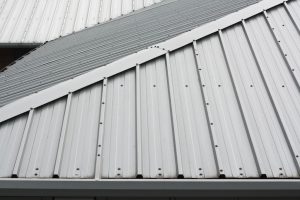Storage tanks are one of the crucial implements in a range of industrial, residential and agricultural applications. You have different material options for your storage tank, but plastic beats most of the other materials on offer. Plastic storage tanks, more so those manufactured through rotational moulding, are non-corrosive, lightweight and durable. They also do not have the risk of leakage since they are constructed in a single piece and thus, have no seams or joints.
If you are in the market for rainwater tanks in Australia, plastic tanks are your safest choice since they have minimal risk of leaching. To guarantee their durability and rainwater tapping efficiency, it is vital to get a good base for their installation. A poor tank foundation will give in to the capacity and the structural load of your tank, which, in turn, will result in eventual tank failure.
The following are some of the best foundation options for plastic water tanks.
Pile Foundations
These are an ideal choice in places with poor soil conditions. The piling process involves driving or drilling of columns into your soil. The columns can be made of stone, concrete or steel. These columns will provide extra support for the tank and prevent uneven settling. Though costly, piling is a good solution for excessively big tanks like the ones used for water storage in industries.
Crusher Dust Foundations
 Crusher dust comprises small crushed rocks and fine sand. This is a cheap foundation, which you may augment over time based on your needs. The crusher dust foundation is ideally treated with pine sleepers or bricks, which are joined at the ends, creating a retainer to prevent the washing away of your material. The base should be sturdy, compact and about 25-50mm before you lay down your crusher dust. The material is readily available from landscaping material suppliers.
Crusher dust comprises small crushed rocks and fine sand. This is a cheap foundation, which you may augment over time based on your needs. The crusher dust foundation is ideally treated with pine sleepers or bricks, which are joined at the ends, creating a retainer to prevent the washing away of your material. The base should be sturdy, compact and about 25-50mm before you lay down your crusher dust. The material is readily available from landscaping material suppliers.
Reinforced Concrete
This is the most common tank foundation option. The slab can be square or round depending on your water tank’s shape. The ground is first compacted, and then reinforced concrete is poured and cured. Reinforced concrete foundations are among the most durable and strongest options you have. They are the ideal choice in areas prone to earthquakes. A reinforced concrete foundation is, however, costly owing to the materials and labour used to build it.
Pre-Cast Concrete
This foundation comprises several pre-cast concrete pavers or slabs placed on a bed of sand. Though cheaper and easier to build compared to a reinforced concrete tank base, it is not as strong as the latter. Most property owners install a tank stand in addition to the pre-cast concrete to enhance their tank’s stability. The tank stand should comprise hardwood decking with not more than 10mm gaps.
With proper installation, a rotationally molded plastic tank can last for years with minimal maintenance or repairs. Placing your tank on unstable foundations such as uneven ground or corrugated iron decking will not only damage your tank but also typically void your manufacturer’s warranty. You should also ensure the area you choose for your tank installation is not near trees since the roots might intrude on your tank’s base over time.
Benefits of Plastic Water Tanks
- Plastic water tanks are leak-proof. You don’t have to worry about leakage as compared to concrete water tanks that would need to be checked for leakage at least for the first few years.
- Plastic water storage is cost-effective.
- Plastic water tanks are lightweight compared to other types of water tanks. It won’t be a problem for you if you want to move them to a different position. The tank’s location can be changed from one home to another or from one floor to a different floor.
- Plastic storage tanks are rustproof. Since it doesn’t corrode you won’t have to worry about rust.
- Plastic storage tanks are watertight. It’s known to maintain its cleanliness longer since it’s watertight. The water inside remains free from dirt so it’s more hygienic as compared to tanks made of concrete.
- Plastic storage tanks are versatile. If you need to increase the water capacity, you can just do so by connecting another water tank to the existing one.
- Plastic water storage is easy to clean. It requires less maintenance compared to other water tanks.
Plastic Water Tank: Is it Safe?
Clean water is a basic human necessity. However, because of pollution, you need to ensure that the water you’re using for your daily needs is clean.
Plastic water tanks are safe, but like any kind of water tank, the material needs to be of high quality. Plastic that’s poor quality could impact the chemical composition of water.
The plastic used should also be food-grade level to prevent algae from growing inside the tank. Algae can grow when sunlight comes through the sides of the plastic storage. Once there are algae in the tank, it’s impossible to use the water anymore.
It is safe to use plastic water tanks, however, you should make sure that the water tank you’re buying is of high quality and is approved by the NSF (National Sanitation Foundation.)






